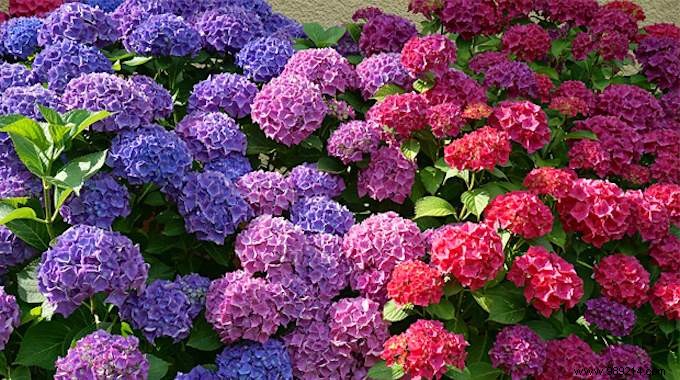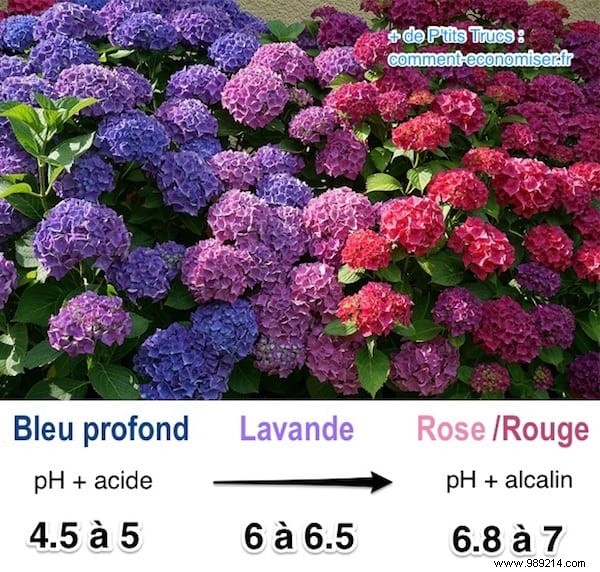
Hydrangeas are beautiful flowers shaped like large pom poms.
These flowers have incredible colors:they can be pink, blue, white or even green.
In addition to this, there is a magic side:the hydrangea adapts its color depending on the pH of the soil .
Below a pH of 5.5, the flowers are deep blue.
Between 5.5 and 6.5, they have a beautiful lavender color. And above 6.5, they turn pink or red.
You can therefore choose the color of your hydrangeas easily by modifying the pH of the soil.
The trick is to use white vinegar and baking soda to change the pH of the soil . Watch:

In order for the flowers to turn pink, they need an alkaline soil, that is, with a pH of more than 6.5.
For this, put 2 teaspoons of baking soda in your watering can. Water the hydrangea with this mixture about once a month.
Over time, the soil will become more alkaline. The flower will then take on pink and red reflections.
For the flowers to turn blue, you need a more acidic soil with a pH between 4.5 and 5.
To do this, dilute 2 cups of white vinegar (about 500 ml) in 4 liters of water. Then, water the hydrangeas with this mixture. Adapt the quantities of vinegar according to the size and age of the plant. If it is in a jar, put less vinegar.
Then place the plundered slate at the foot of the hydrangea and leave to act.
You can also replace the slate with rusty nails. Plant them in the soil in the direction of the roots.
There is also a powder of aluminum sulphate on the market, to be diluted in water to obtain the same effect. The only difference is the higher price.
Know that a white hydrangea will never turn fuchsia pink.
It is often the edges of the flower that will take on a pink color.
Also depending on the hydrangea species, you may not necessarily get a deep blue, but maybe just a bluish sheen.
In any case, if you want abundant flowering, keep a soil with a pH below 6. But be careful, this must be done well BEFORE flowering!